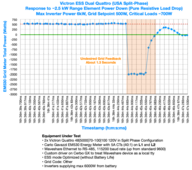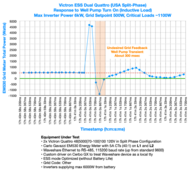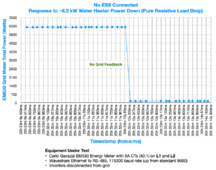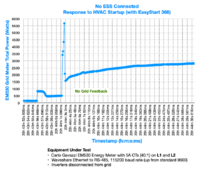ricardocello
Watching and Learning
Below is a chart of the Victron ESS (Grid Code Other) responding to a 6 kW water heater turnoff event.
The general consensus is that Victron has a hardcoded 400W/second limitation.
With split-phase Quattros, this should be 800W/second.
This chart shows a faster response time than that (about 3000W/second). @1201
Note the oscillation at the end as the control loop tries to stabilize at 500W Grid Point.
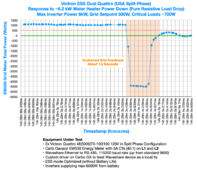
The general consensus is that Victron has a hardcoded 400W/second limitation.
With split-phase Quattros, this should be 800W/second.
This chart shows a faster response time than that (about 3000W/second). @1201
Note the oscillation at the end as the control loop tries to stabilize at 500W Grid Point.




